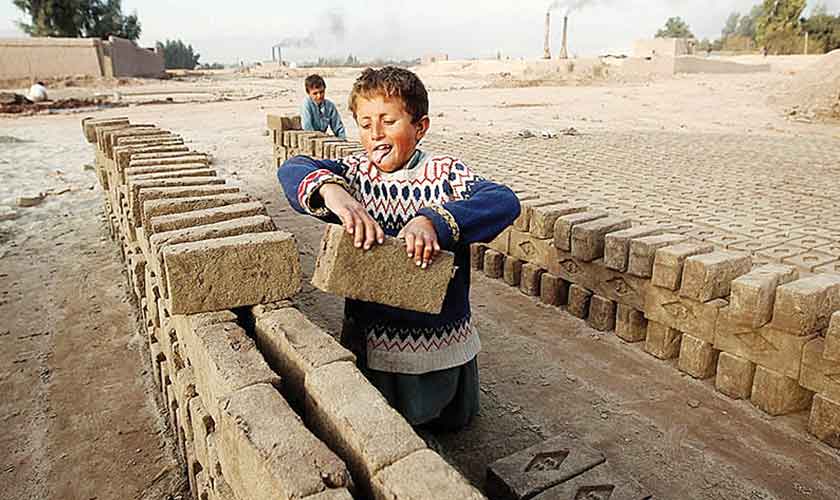How much of a priority are the children engaged in and exposed to hazardous and harmful work?

“Norming occurs when team members have developed a mutual understanding of their roles and expectations of one another.”
Since 2000, Pakistan has been a signatory to the ILO Convention 182. It is thus committed to ending the worst forms of child labour (WFCL). According to the convention, children in agriculture, brick kilns, domestic labour, deep sea fishing, mining, bangle making, rag/ trash picking etc fall in the worst forms of child labour. 23 years later, worst forms of child labour have been added to the Children’s Employment Act 1991 as prohibited areas of work in the Islamabad Capital Territory (ICT) and the provinces.
But does legislation really matter in our country? If it did, our children would have been well protected from conception and birth to childhood and adolescent years to become entitled adults, defending their growth pathways across the lifecycle. The responsibility of the state is for all children who are 5-16-year-olds or 44 percent of the total population; Pakistan has the highest number of children out of school, beyond 23 million with a runaway population growth rate of 2 percent.
When I began my first job in Pakistan in 1992 at a UN entity, my first orientation site was a brick kiln education initiative in Kasur district where children were found working alongside their bonded labour families. This was soon after Pakistan became a signatory to the Convention on the Rights of the Child (CRC) in 1990 covering civil, political, social, economic, health and cultural rights of children. Whilst all 41 articles are linked, to be understood fully as clusters of rights, just like the fundamental rights in the Constitution of Pakistan or the SDGs 2030, Article 32 of the CRC is dedicated to child protection from “economic exploitation and from performing… work that is likely to be hazardous or to interfere with the child’s education, or to be harmful to the child’s health or physical, mental, spiritual, moral or social development.” Article 32 can only be effective when implemented in conjunction with Article 28 on right to education, “regardless of race, gender or disability, in detention, or as a refugee,” and Article 39 to promote physical and psychological recovery and social reintegration of a child victim of any form of neglect, exploitation, or abuse… fostering health, self-respect and dignity of the child.” Such reframing can shift norming positively for the child in Pakistan. The shift from norming to exploit, deprive and abuse, to norming for child protection and entitlements is imperative for Pakistan if it is to be a caring state. Partnerships lie at the heart of such shifts and there will be no lack of partners once the governments give a call to action for protecting our children.
Does legislation really matter in our country? If it did, our children would have been well protected from conception and birth to childhood and adolescent years to become entitled adults, defending their growth pathways across the lifecycle.
Article 28 of the CRC on the absolute right to education has been reinforced by Article 25-A of the constitution as a fundamental right for all children aged 5-16 years (2010), and SDG 4 on Education (2015). These binding fundamental rights of citizens/ children and conventions continue to accumulate, whilst a significant and rising percentage of children remain outside the implementation band, crushed by emergencies (Covid-19 and floods), poverty, stunting (42 percent), abysmal economic growth of less than 1 percent, declining quality education and child protection. With only 1.7 percent of the GDP expenditure (Economic Survey of Pakistan 2022-23) on education, and a runaway population of 240 million, with annual increase to our stock of 5 million born annually, the children of Pakistan are in jeopardy to live their lives in and with dignity and entitlements of health, education and protection.
In our daily routines, we can witness large numbers of children begging, working in all forms of child labour in streets/ shops/ restaurants, out of school and as invisible child domestic labour behind closed doors. We also read headlines daily in the media relating to child abuse, rape, torture and death of child domestic labour by ‘educated’ people – one more ugly statistic, or two or perhaps even ten, daily. But does it really matter when we have actively contributed to the norming of child labour in our society? Children of families on the move, domestic migrants, international refugees in extreme stress living with or without identity cards, dodging authorities by forgetting their mother tongue, culture and identities to survive.
Should one end this article with some recommendations? Organisations like mine and others have taken the issue of child labour to the parliament. We have handed a charter of demands to the parliamentarians who have made bold promises. Sadly, however, not all the promises have been kept.
We must provide cover to every child through an aggressive action plan that assures all children in school and learning foundational literacy, numeracy, social emotional skills to build confidence and voice of every child. The current shortage of schools in Pakistan can be compensated by declaring every school and all safe and under-utilised public spaces to be used in double shifts for our children’s fundamental right to education, under Article 25-A and its laws from early years to secondary education across Pakistan. To implement such a plan, we need the national and provincial resolve for the next decade; budgets for education raised to 3.5 percent by 2025 and 5 percent by 2030 through innovative financing options. Only such extraordinary efforts can make up for the deficit of 75 years of willful neglect that has normed child labour and its worst forms.
Source: THE NEWS
The writer is the CEO of Idara-i-Taleem-o-Aagahi, a Pakistan Learning Festival founder and an Education Commission commissioner. She can be reached at baela.jamil@itadec.org




